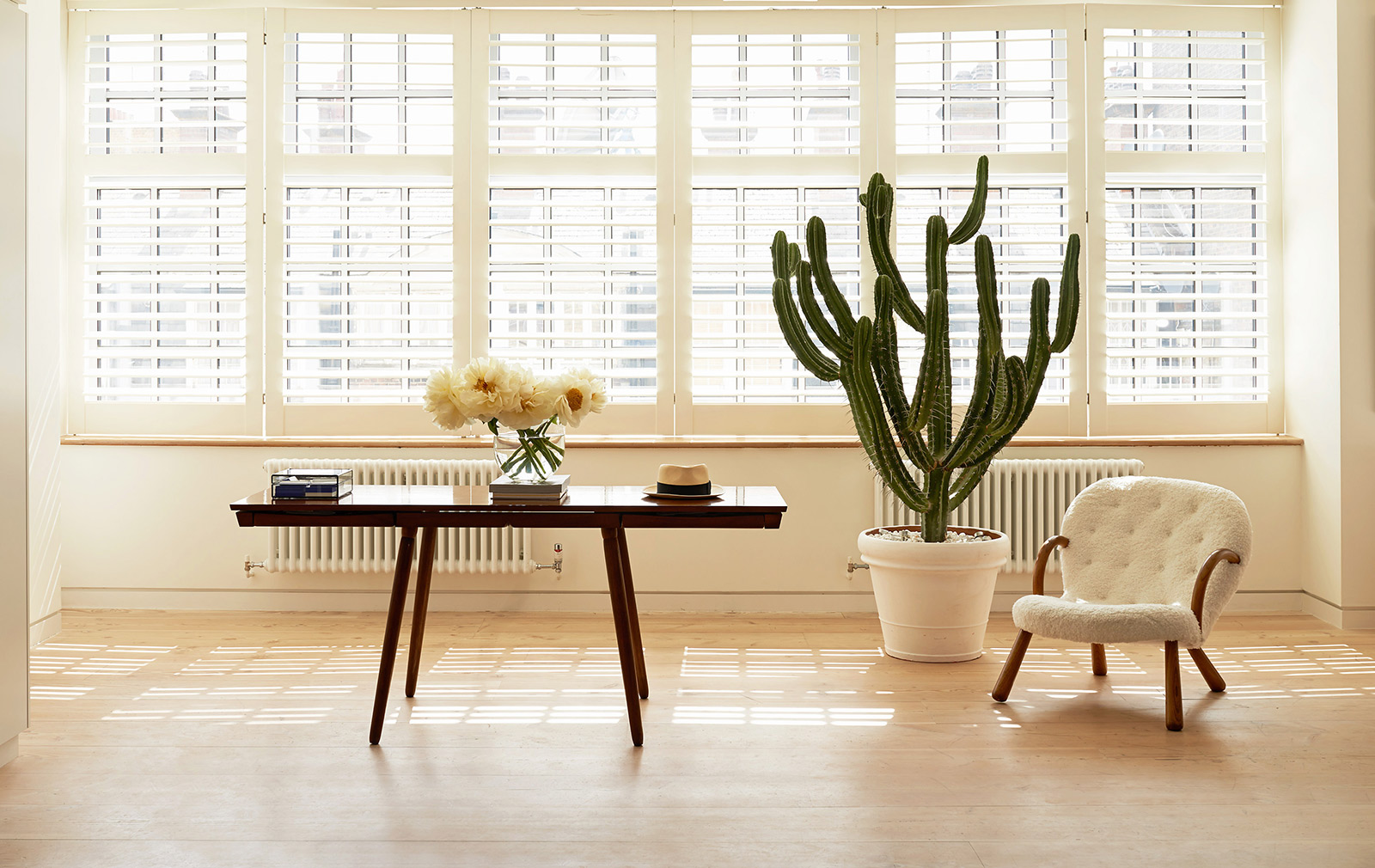Homes can have a fundamental effect on health, with everything from the colour of the walls to the amount of clutter influencing mental wellbeing. With this in mind, we’ve put together five ways interior design can be used to combat anxiety, and create a calming environment
Incorporate biophilic design

There’s a reason plant-filled spaces are such a draw on Instagram – whether we realise it or not, biophilic design helps boost our wellbeing. It’s a practice that dates back thousands of years, as proved by ancient Egyptian tomb paintings and the ruins of Pompeii. A 2009 study found that environments devoid of nature have a negative effect, and that indoor plants had the potential to reduce stress and even decrease health complaints.

This was backed up by a more recent investigation, which showed that interaction with indoor greenery can reduce physiological and psychological stress – proof that you should fill your home with foliage.
Banish angst-inducing colours

Colour can have a powerful psychological effect. Theories that Baker-Miller pink can reduce aggression have been swirling for years, and in 2013 book Drunk Tank Pink, Adam Alter explored how colour can have an impact, noting that people are more intimidated by tests with red covers than green ones. Living spaces should be painted with this in mind, which means avoiding mentally stimulating colours like orange and using soft, neutral colours that create a calming effect instead – for example blues are particularly good for bedrooms. Grey can also help us unwind, but colour and design consultant Karen Haller warns that too much of it can become draining.
Get your lighting right

Research by the University of Toronto suggests that bright light can intensify our feelings, both positive or negative, and suggests that turning down the light can help us make more rational decisions. Blue light makes us more alert, which makes a good choice for home studies, but something to be avoided in the bedroom where it can suppress melatonin production and stop us from drifting off to sleep.

Choosing soft light for bedrooms and living spaces can help us relax. Making sure homes get plenty of natural light can also help our circadian rhythms, helping us sleep better, boosting our overall sense of wellbeing and, according to some research, helping to combat the symptoms of depression.
Embrace minimalism

Most people can attest to the theory that a cluttered space exacerbates stress and anxiety. Research backs this up, suggesting that acquiring more material goods isn’t necessarily a path to happiness. In response, many people are adopting a minimal approach to their homes, following Marie Kondo’s KonMari method of organisation, and opting for less furniture and detail to create a calming living space. Master of minimalism, architect John Pawson, has been following this philosophy for decades, but believes it’s a return to tradition rather than anything radical. ‘It’s something that’s been around for ever,’ he told The Guardian. ‘People have always been going further and further into the desert to get away.’ But minimalism today doesn’t have to mean clean lines and an absence of decoration. As our contributor Katie Treggiden explains, ‘The new minimalism is about a small selection of carefully curated, meaningful objects.’
Get a good bed

A decent night’s sleep is paramount to wellbeing, and a lot of this comes down to the kind of bed we sleep in. The Sleep Council says that uncomfortable beds can reduce sleep by an hour each night, although many people won’t make the connection between a lack of rest and a bad bed. It recommends replacing mattresses every seven years, and making sure that new ones are thoroughly tested before purchase – that means at least ten minutes lying on the bed in your normal sleeping position. Comparing mattress fillings can also be beneficial, as different types can offer different health benefits.
Read next:
Can meditation pods help stressed out Londoners?
These Swedish cabins can reduce stress by 70%






















